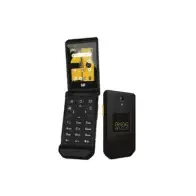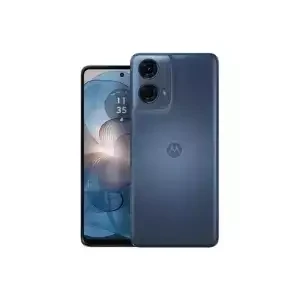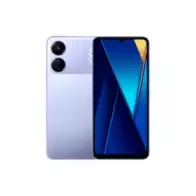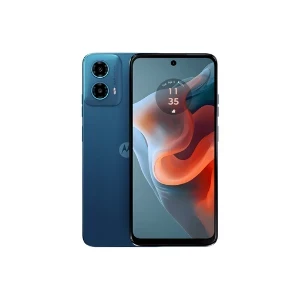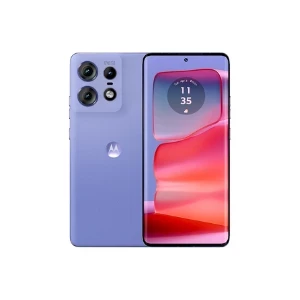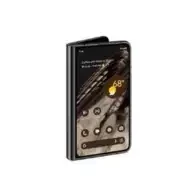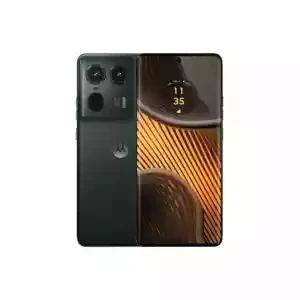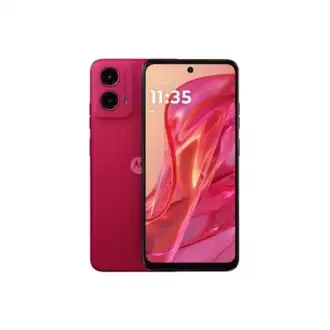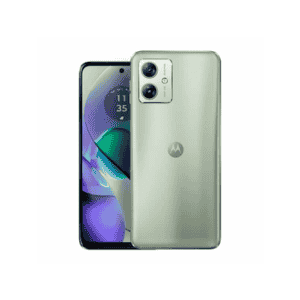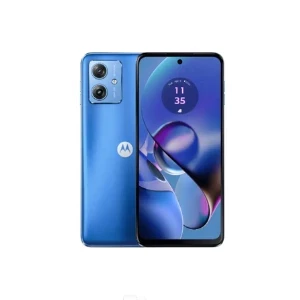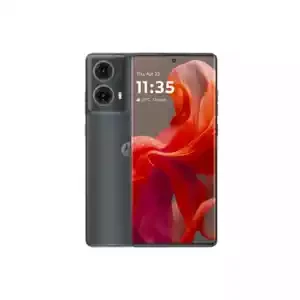

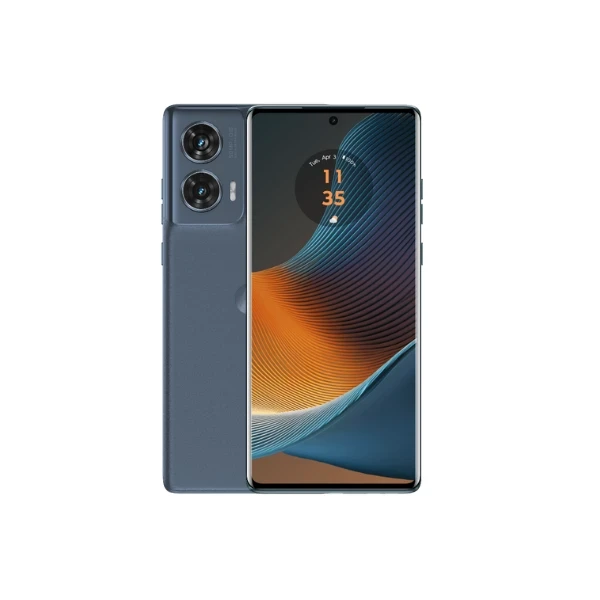



Motorola Moto Edge 50 Fusion
প্রোডাক্ট এর আপডেট প্রাইজ পেতে দয়া করে যোগাযোগ করুন।
Chat On WhatsApp
(বিঃদ্রঃ: হোম ডেলিভরি অথবা প্রোডাক্ট কুরিয়ারে পেতে চাইলে 1020 টাকা এডভান্স করে অর্ডার কনফার্ম করতে হবে)
-
৳12,000.00
-
৳16,500.00
-
৳11,500.00
-
৳23,500.00
-
৳39,000.00
-
৳145,000.00
Frequently Bought Products
Motorola Edge 50 Pro
Motorola Edge 50 Ultra
Motorola Moto G24 power
Motorola Moto G45
Motorola Moto G34
Motorola Moto G54
Motorola Moto G64
Motorola Moto G85
Motorola Edge 50 Fusion Price in Bangladesh

key features of the Motorola Edge 50 Fusion:
- Display: Large 6.7 inch pOLED display with a smooth 120Hz refresh rate (some regions get 144Hz) and a high 1600 nits peak brightness.
- Water resistant: Built to withstand dust and water with an IP68 rating.
- Powerful processor: Equipped with the Qualcomm Snapdragon 7s Gen 2 processor for good performance.
- Storage: Up to 512GB of storage with 12GB of RAM for fast multitasking.
- Camera system: Dual rear camera system with a 50MP main sensor and a 13MP ultrawide sensor.
- Long-lasting battery: 5000mAh battery with support for 68W fast charging.
- Latest software: Runs on the latest Android 14 operating system.
- Other features: Stereo speakers, in-display fingerprint sensor, expandable storage (not available), and multiple color options.
Specifications of Motorola Moto Edge 50 Fusion
NETWORK Technology
- GSM / HSPA / LTE / 5G
LAUNCH
- Announced: 2024, April 16
- Status: Coming soon. Expected release 2024, May
BODY
- Dimensions: 161.9 x 73.1 x 7.9 mm (6.37 x 2.88 x 0.31 in)
- Weight: 174.9 g (6.17 oz)
- Build: Glass front, silicone polymer back (eco leather), plastic frame
- SIM: Nano-SIM, eSIM or Dual SIM (Nano-SIM, dual stand-by)
- IP68 dust/water resistant (up to 1.5m for 30 min)
DISPLAY
- Type: P-OLED, 120Hz (LATAM), 144Hz (INT), 1600 nits (peak)
- Size: 6.7 inches, 108.4 cm2 (~91.6% screen-to-body ratio)
- Resolution: 1080 x 2400 pixels, 20:9 ratio (~393 ppi density)
- Protection: Corning Gorilla Glass 5 (unconfirmed)
PLATFORM
- OS: Android 14
- Chipset: Qualcomm SM7435-AB Snapdragon 7s Gen 2 (4 nm) - International; Qualcomm SM6450 Snapdragon 6 Gen 1 (4 nm) - LATAM
- CPU: Octa-core (4x2.40 GHz Cortex-A78 & 4x1.95 GHz Cortex-A55) - International; Octa-core (4x2.2 GHz Cortex-A78 & 4x1.8 GHz Cortex-A55) - LATAM
- GPU: Adreno 710
MEMORY
- Card slot: No
- Internal: 128GB 8GB RAM, 256GB 8GB RAM, 256GB 12GB RAM, 512GB 12GB RAM
- UFS 2.2
MAIN CAMERA
- Dual:
- 50 MP, f/1.9, (wide), dual pixel PDAF, OIS, 1.0µm
- 13 MP, f/2.2, 120˚ (ultrawide), 1.12µm, AF
- Features: LED flash, HDR, panorama
- Video: 4K@30fps, 1080p@30/60/120fps, gyro-EIS
SELFIE CAMERA
- Single: 32 MP, f/2.5, (wide), 0.7µm
- Features: HDR
- Video: 1080p@30fps
SOUND
- Loudspeaker: Yes, with stereo speakers
- 3.5mm jack: No
COMMS
- WLAN: Wi-Fi 802.11 a/b/g/n/ac, dual-band
- Bluetooth: 5.2, A2DP, LE
- Positioning: GPS, GLONASS, GALILEO
- NFC: Yes
- Radio: No
- USB: USB Type-C 2.0, OTG
FEATURES
- Sensors: Fingerprint, accelerometer, gyro, proximity, compass
BATTERY
- Type: 5000 mAh, non-removable
- Charging: 68W wired, 50% in 15 min (advertised)
MISC
- Colors: Forest Blue, Marshmallow Blue, Hot Pink
Motorola Edge 50 Fusion: A Feature-Packed Mid-Ranger
The Motorola Edge 50 Fusion is a mid-range smartphone that aims to deliver a balance of performance, camera capabilities, and a large, immersive display. Here's a detailed look at its key features:
Display:
- Large and Smooth: It boasts a big 6.7-inch pOLED display with a FHD+ resolution (1080 x 2400 pixels). This translates to a sharp and vivid viewing experience, perfect for watching videos or gaming.
- Ultra Smooth Scrolling: The 144Hz refresh rate ensures smooth scrolling and transitions, making everyday use feel more responsive.
- Durable: Corning Gorilla Glass 5 protects the display from scratches and minor bumps.
Performance:
- Capable Processor: The phone is powered by the Qualcomm Snapdragon 7s Gen 2 chipset, which offers reliable performance for everyday tasks and some light gaming.
- Ample RAM: With 8GB or 12GB of RAM options, you can multitask efficiently and run multiple apps smoothly.
- Storage Options: Choose between 256GB or 512GB of storage to accommodate your apps, games, and media files.
Camera System:
- Versatile Rear Camera: The triple rear camera system features a 50MP main sensor with OIS (Optical Image Stabilization) for capturing clear and detailed photos, even in low-light conditions.
- Ultrawide Potential: A 13MP ultrawide sensor lets you capture expansive landscapes or group shots.
- Macro Details: A dedicated macro lens allows you to get close-up shots of tiny objects.
- Sharp Selfies: The 32MP front camera ensures high-quality selfies and clear video calls.
Other Features:
- Fast Charging: The included 68W TurboPower charger allows you to quickly top up the phone's 5000mAh battery.
- Clean Software: The phone runs close-to-stock Android 14, offering a clean and bloatware-free software experience.
- Durability: The phone boasts an IP68 rating, making it dust and water resistant for added peace of mind.
- Design: It comes in three interesting color options: Forest Blue (PMMA), Hot Pink (Vegan Suede), and Marshmallow Blue (Vegan Leather).
Potential Considerations:
- Mid-Range Power: While capable, the processor might not be suitable for the most demanding games.
- No Wireless Charging: The phone doesn't support wireless charging.
Overall, the Motorola Edge 50 Fusion is a compelling option for users who prioritize a large display, a versatile camera system, long battery life with fast charging, and a clean software experience. If you're looking for top-of-the-line processing power or wireless charging, you might want to consider other options.
About Motorola Mobile Company
Motorola's story in the mobile world is a long and winding one, stretching back nearly a century. From humble beginnings to iconic devices and a changing of hands, the brand has left an undeniable mark on the industry.
From Car Radios to Mobile Phones: A Company in Transition
Founded in 1928 as Galvin Manufacturing Corporation, Motorola's initial focus was on car radios. The company name itself, a combination of "motor" and "Victrola" (a popular brand of record players at the time), reflected this early direction. However, Motorola's innovative spirit soon led them to explore new frontiers. In the 1930s, they developed the first portable FM two-way radios for police forces, marking a significant shift towards communication technologies. This innovation would pave the way for their future dominance in mobile phones.
The Rise of the Mobile Phone and Iconic Devices
By the 1970s, Motorola had become a major player in the burgeoning mobile phone market. Their DynaTAC 8000X, launched in 1983, is credited as the world's first commercially available handheld mobile phone. Though bulky and expensive by today's standards, the DynaTAC 8000X was a revolutionary device that symbolized the dawn of a new era in mobile communication.
Motorola continued to innovate throughout the 1990s and early 2000s, releasing iconic phones like the StarTAC, the world's first clamshell phone, and the RAZR, renowned for its ultra-thin design and signature flip mechanism. These phones became cultural icons, representing a time of rapid advancement and a growing obsession with mobile connectivity.
A Company Divided and the Future of Motorola
Despite its successes, Motorola faced challenges in the late 2000s as competition from Apple's iPhone and other smartphone manufacturers intensified. In 2011, the company underwent a significant restructuring, splitting into two separate entities: Motorola Mobility (focused on consumer mobile devices) and Motorola Solutions (concentrating on public safety and enterprise communication solutions).
Motorola Mobility's journey since the split has been one of ownership changes. Google acquired the company in 2012, aiming to leverage its patent portfolio for the Android operating system. However, Google eventually sold Motorola Mobility to Lenovo, the Chinese tech giant, in 2014.
Motorola Today: Back in the Game
Under Lenovo's ownership, Motorola has made a comeback in the smartphone market. They offer a range of Android-powered devices, including the budget-friendly Moto G series, the feature-packed Edge series, and the foldable Razr reimagining the classic phone design for a new generation. While they may not hold the top spot in the market, Motorola remains a relevant player, continuing its legacy of innovation and offering consumers diverse choices.
A Look Ahead: What's Next for Motorola?
As the mobile landscape continues to evolve, it will be interesting to see how Motorola adapts and innovates. With a focus on affordability, user experience, and potentially even foldable technology, Motorola has the potential to carve out a strong niche in the market. Whether they can recapture their former glory as a mobile industry leader remains to be seen, but their long and impactful history ensures their place in the annals of mobile innovation.
Unveiling the Motorola Edge Fusion: A Blend of Performance and Value
Motorola's Edge series has carved a niche for itself in the smartphone market, offering a compelling mix of features at competitive prices. Within this lineup, the Motorola Edge Fusion series stands out as a reliable option for users seeking a balance between performance and affordability.
This series has seen multiple iterations, so let's delve into the common characteristics and explore the specifics of the latest offering, the Motorola Edge 50 Fusion.
Hallmarks of the Motorola Edge Fusion Series
-
Display: Across the Edge Fusion range, you can expect vibrant visuals. These phones typically boast large OLED displays, measuring around 6.5-6.7 inches, with Full HD+ resolution (1080 x 2400 pixels). This translates to crisp visuals and a smooth viewing experience, often complemented by a high refresh rate (up to 144Hz in the Edge 50 Fusion) ensuring silky-smooth scrolling and animations. Corning Gorilla Glass protection adds peace of mind against everyday scratches.
-
Performance: The Edge Fusion series caters to a range of users. Earlier models like the Edge 20 Fusion sported mid-range processors like the MediaTek Dimensity 800U, suitable for everyday tasks and multitasking. The latest iteration, the Edge 50 Fusion, takes a significant leap with the Qualcomm Snapdragon 7s Gen 2 chipset, offering more processing power for demanding applications and smoother gaming.
-
Cameras: While not necessarily camera-centric, the Edge Fusion series provides a capable camera system for capturing everyday moments. Typically, you'll find a triple or quad-camera setup on the rear, with a high-resolution main sensor (often 50MP in the Edge 50 Fusion) accompanied by an ultrawide sensor and additional lenses for depth or macro photography. The front-facing camera typically falls in the 32MP range, catering to decent selfies and video calls.
-
Software: Motorola prides itself on a near-stock Android experience, meaning you get an uncluttered interface free from excessive bloatware. This translates to a smoother user experience and faster updates. The Edge 50 Fusion boasts the latest Android 14, keeping you updated with the newest features and security patches.
-
Battery Life: The Edge Fusion series prioritizes long battery life. The phones typically pack in capacities around 4400mAh, which, combined with the power-efficient processors, should get you through a full day of use on a single charge.
-
Durability: Several Edge Fusion models, including the Edge 50 Fusion, boast an IP68 rating, signifying dust and water resistance. This provides peace of mind against accidental splashes or spills.
A Closer Look at the Motorola Edge 50 Fusion
As the latest addition to the series, the Motorola Edge 50 Fusion builds upon the strengths of its predecessors. Here's a detailed breakdown of its key features:
-
Display: A 6.7-inch FHD+ OLED display with a smooth 144Hz refresh rate ensures immersive viewing and exceptional responsiveness.
-
Performance: The Qualcomm Snapdragon 7s Gen 2 chipset, coupled with 12GB of RAM, offers a significant performance boost compared to earlier models. This caters to multitasking, gaming, and demanding applications. Storage options include 256GB and 512GB, providing ample space for your files and apps.
-
Camera: The rear setup features a 50MP main sensor, a 13MP ultrawide sensor, and additional unspecified lenses. The 32MP front-facing camera promises clear selfies and video calls.
-
Battery: A 4400mAh battery, combined with the efficient processor, should provide all-day battery life.
-
Other Features: Dual stereo speakers for enhanced audio, an in-display fingerprint sensor for security, and support for fast charging capabilities.
Who is the Motorola Edge Fusion Series For?
The Motorola Edge Fusion series is a strong contender for users who prioritize value without compromising on essential features. If you're looking for a phone with a vibrant display, capable performance, a reliable camera system, and long battery life, all at a competitive price point, the Edge Fusion series is certainly worth considering.
Gamers might find the performance of the Edge Fusion series, particularly the earlier models, a little underpowered for graphically demanding titles. For them, other Motorola offerings within the Edge series focused on raw power might be a better fit.
Camera enthusiasts seeking exceptional photographic experiences might also find the camera systems in the Edge Fusion series a little basic. There are other smartphones in the market with more elaborate camera setups and functionalities.
Motorola Moto Edge 50 Fusion: Public FAQ
General
-
Q: When is the Moto Edge 50 Fusion expected to be released?
- A: There is no official announcement yet regarding the release date of the Moto Edge 50 Fusion. Reliable sources can help you stay updated on potential release schedules.
-
Q: What is the expected price range of the Moto Edge 50 Fusion?
- A: Specific pricing details are unknown yet. However, considering it's a Moto Edge series phone, it likely falls into the mid-range to high-mid range price segment.
-
Q: Where will the Moto Edge 50 Fusion be available for purchase?
- A: Official launch information is yet to come, so specific regions or carriers are unknown. Motorola phones are generally available for purchase through their website, carrier stores, and major electronics retailers depending on your location.
Specifications
-
Q: What processor does the Moto Edge 50 Fusion have?
- A: Specific details are awaited, but rumors suggest it might come with a mid-range processor like the Snapdragon 700 series or MediaTek Dimensity series.
-
Q: How much RAM and storage will the Moto Edge 50 Fusion have?
- A: Specific configurations are unknown. Motorola often offers multiple RAM and storage variants for their phones, so you might see options like 6GB/8GB RAM and 128GB/256GB storage.
-
Q: What are the camera specifications of the Moto Edge 50 Fusion?
- A: Details are yet to be confirmed, but rumors suggest a triple or quad-camera system on the back, likely with a high-resolution main sensor and additional ultrawide or telephoto lenses. The front-facing camera megapixel count is also unknown at this stage.
-
Q: What size and resolution will the Moto Edge 50 Fusion display have?
- A: Specific display details are awaited. Motorola Edge phones typically feature large displays, so expect something around 6-inches or more with Full HD+ or higher resolution.
-
Q: Does the Moto Edge 50 Fusion have expandable storage?
- A: Official information is not available yet. Some Moto Edge phones offer expandable storage via microSD card, while others don't.
Software
-
Q: Which version of Android will the Moto Edge 50 Fusion run on?
- A: It's likely to run on a recent version of Android, possibly Android 13 or even 14 if it launches later in 2024. Motorola offers a relatively stock Android experience with some added features.
-
Q: Is the Moto Edge 50 Fusion guaranteed to receive future Android updates?
- A: Specific update policies depend on Motorola's strategy for this particular model. Generally, Motorola offers updates for a certain period, but the exact duration can vary.
Motorola Edge 50 Fusion: Pros and Cons
Pros:
- Strong Performance: The Motorola Edge 50 Fusion boasts a MediaTek Dimensity 9000+ processor, which is capable of handling demanding tasks and games smoothly.
- Large and Smooth Display: It features a 6.7-inch POLED display with a 120Hz refresh rate, offering a clear and responsive viewing experience.
- Clean Software: Motorola is known for its near-stock Android experience, which means you get a bloatware-free interface with timely updates.
- Long Battery Life: The 5000mAh battery should provide a full day's worth of use for most users, and the fast charging allows you to quickly top it up when needed.
- Affordable: Compared to some flagship phones, the Motorola Edge 50 Fusion is priced competitively.
Cons:
- Average Camera System: While not terrible, the camera system on the Edge 50 Fusion isn't top-of-the-line. Don't expect the same quality as some higher-end phones.
- Plastic Build: The phone has a plastic back which might feel less premium compared to glass backs on some phones.
- Limited Storage Options: Depending on the region, storage options might be limited, potentially requiring the use of a microSD card for additional storage.
- No Headphone Jack: If you prefer wired headphones, you'll need to use an adapter or opt for wireless headphones.
Overall, the Motorola Edge 50 Fusion is a solid mid-range phone with good performance, a smooth display, and a clean software experience. However, you might want to consider other options if you prioritize camera quality or a premium build.
-
৳12,000.00
-
৳16,500.00
-
৳11,500.00
-
৳23,500.00
-
৳39,000.00
-
৳145,000.00
iPhone – Buy iPhone in Bangladesh at the Best Price
Apple iPhones are among the most premium smartphones in Bangladesh, known for their high-end performance, advanced camera technology, and smooth iOS experience. Gadget & Phone offers the latest iPhone 15 Pro Max, iPhone 14 Pro Max, iPhone 13 Pro Max, and iPhone SE 2022 with official Apple warranty, EMI options, and nationwide delivery.
Whether you need an iPhone for photography, gaming, or business, we provide the best iPhone price in Bangladesh. Compare with Samsung Galaxy Price or check Google Pixel Mobiles. Learn more about iPhones on the official Apple website.
Samsung Galaxy – Buy Samsung Galaxy Mobile in Bangladesh
Samsung Galaxy phones are perfect for users looking for cutting-edge technology, stunning displays, and premium camera setups. At Gadget & Phone, you can find Samsung Galaxy S25 Ultra, S24 Ultra, Z Fold5, and Galaxy A54 at the best price in Bangladesh.
If you are looking for an alternative, compare with Xiaomi Redmi or check OnePlus Mobiles. Learn more on Samsung’s official website.
Google Pixel – Buy Google Pixel Mobile in Bangladesh
Google Pixel is the best choice for Android lovers who want the purest software experience. Gadget & Phone brings you Google Pixel 9 Pro, Pixel 8 Pro, and Pixel Fold with official Google warranty and fast delivery.
If you are looking for an alternative, check iQOO Smartphones or compare Vivo Phones. Learn more from Google’s official site.
Xiaomi Redmi – Best Redmi Phones in Bangladesh
Xiaomi Redmi is a popular choice for budget users who need high-performance smartphones at affordable prices. Gadget & Phone offers the latest Redmi Note 13 Pro+, Redmi Note 13, and Redmi 12 with official warranty and EMI options.
Compare with Nothing Phone or explore Oppo Smartphones. Visit Xiaomi’s official website for more details.
More Smartphone Brands Available at Gadget & Phone
Motorola Moto: Find Moto Edge 50 Ultra, Moto G84, and Moto G73 with official warranty and the best discounts. Compare with Realme Mobiles or explore iQOO Phones. Visit Motorola’s official website.
Huawei & Honor: Get premium hardware and powerful cameras with Huawei Mate 60 Pro, Huawei P60 Pro, and Honor Magic 5 Pro. Compare with Infinix Mobiles or check Vivo Phones. Visit Huawei’s official website.
iQOO: Experience flagship gaming performance with iQOO 12 Pro, iQOO 11, and iQOO Neo 7 with the best EMI plans.
OnePlus: Get smooth performance and powerful cameras with OnePlus 12 Pro, OnePlus 11, and OnePlus Nord 3.
Oppo: Stylish design and superior cameras with Oppo Find X6 Pro, Reno 10 Pro, and Oppo A98 at the lowest price.
Vivo: High-end gaming and camera performance with Vivo X100 Pro, Vivo V29, and Vivo Y78.
Realme: Best battery life and smooth performance with Realme GT 5, Realme 11 Pro, and Realme C67.
Nothing Phone: Unique design and clean UI experience with Nothing Phone 2, Nothing Phone 1, and Nothing Ear 2.
Poco: Budget gaming smartphones with Poco X5 Pro, Poco F5, and Poco M5.
Infinix: Feature-packed budget smartphones with great battery life, including Infinix Zero Ultra, Infinix Note 12, and Infinix Smart 7.
